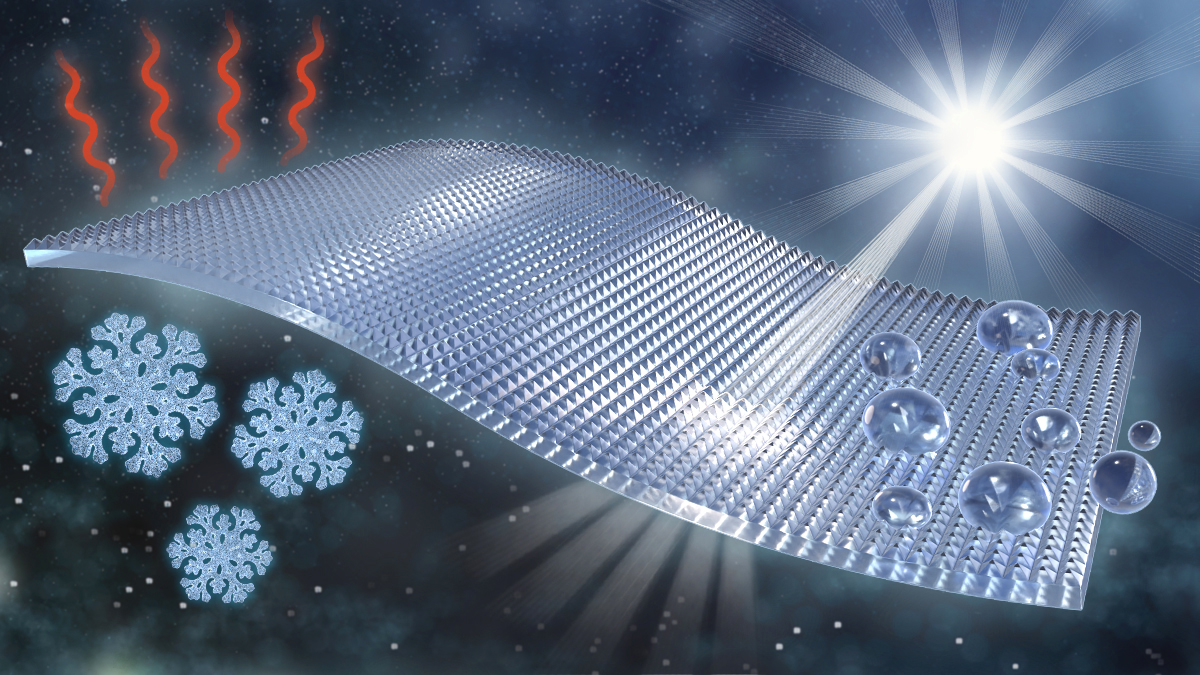Ecology Prize of the Viktor & Sigrid Dulger Foundation 2025
The Heidelberg Academy of Sciences and Humanities awarded the Viktor & Sigrid Dulger Foundation's Ecology Prize 2025 to Gan Huang. He has developed a novel polymer-based metamaterial for sustainable cooling. It protects large glass surfaces on houses effectively reducing glare, repeling water and dust, and enabling passive cooling by radiating heat into the coldness of outer space — all while allowing most visible sunlight to pass through. Designed to be easily applied as a coating on existing glass windows or roofs, this innovation holds great promise as a key technology for next-generation energy-efficient buildings. With Gan Huang the prize went to KIT twice in a row.
The cooling effect is reached without using electricity and without emitting greenhouse gases. The principle of radiative cooling can be experienced in everyday life, especially in autumn: “If a car is parked outdoors at night, the windows can ice up, even if the temperature is above freezing,” the Huang explains. “The windows exchange their temperature with the night sky.” Radiative cooling, hence, means sending heat through the atmosphere into space. However, the atmosphere is only permeable to thermal radiation in a certain range of the spectrum. And this window has to be hit.
The metamaterial developed by Gan Huang and his group is produced inexpensively from a polymer, has a pyramid structure, transmits sunlight, and sends heat in the range of 8 to 13 micrometers wavelength into space. “In developing it, we took our cue from a model in nature,“ the scientist reveals. “The silver ant, which lives in the Sahara, has hair that reflects light and emits heat. This allows the ant to survive at extremely high temperatures.“ Tests at KIT have shown that this effect can best be mimicked by a metamaterial with pyramids smaller than ten micrometers. The polymer film is suitable for application to building and vehicle roofs. Moreover, Huang combines the technology called passive daytime radiative cooling (PDRC) synergistically with hybrid solar modules to harness the energies of the hot sun and cold space together to provide electricity, heating, and cooling simultaneously.

